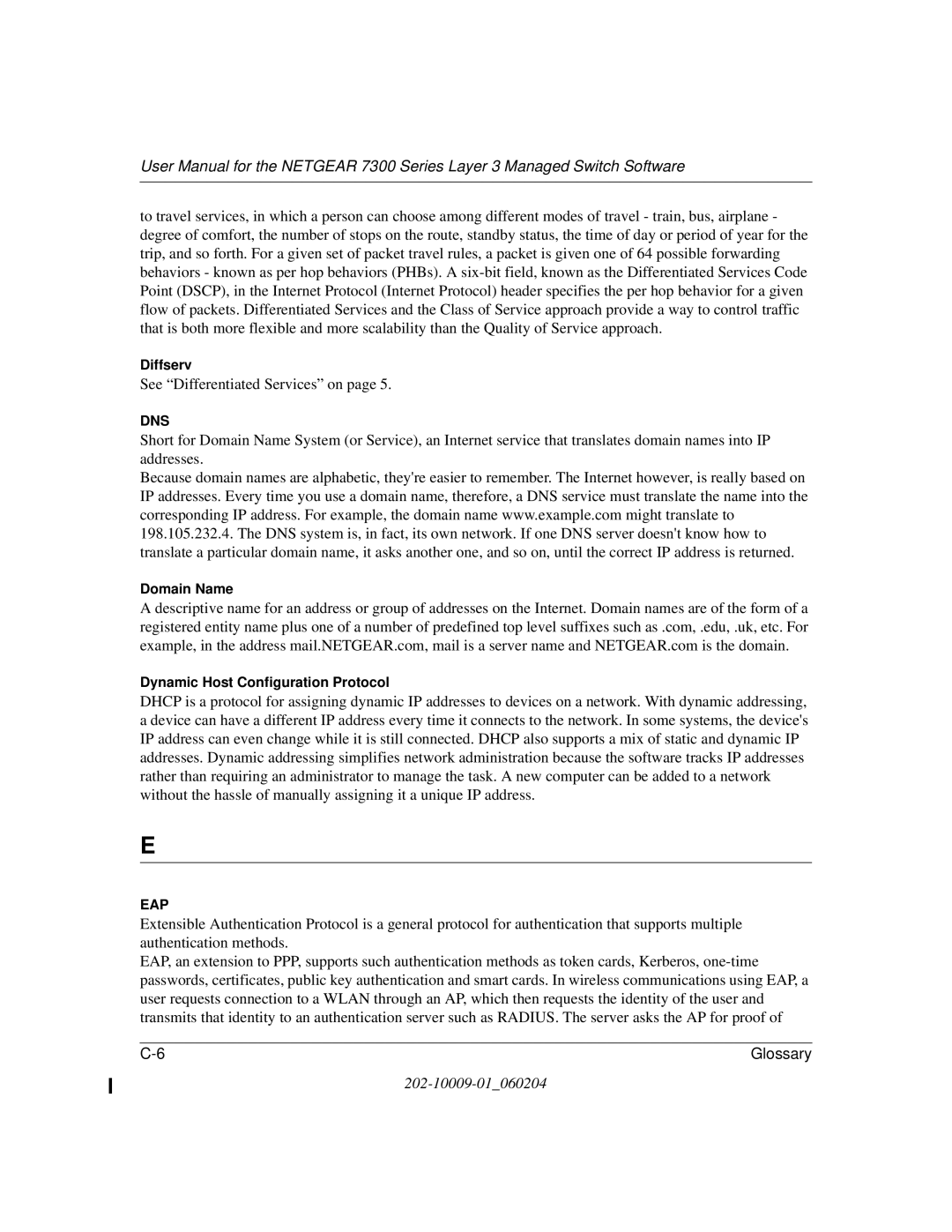
User Manual for the NETGEAR 7300 Series Layer 3 Managed Switch Software
to travel services, in which a person can choose among different modes of travel - train, bus, airplane - degree of comfort, the number of stops on the route, standby status, the time of day or period of year for the trip, and so forth. For a given set of packet travel rules, a packet is given one of 64 possible forwarding behaviors - known as per hop behaviors (PHBs). A
Diffserv
See “Differentiated Services” on page 5.
DNS
Short for Domain Name System (or Service), an Internet service that translates domain names into IP addresses.
Because domain names are alphabetic, they're easier to remember. The Internet however, is really based on IP addresses. Every time you use a domain name, therefore, a DNS service must translate the name into the corresponding IP address. For example, the domain name www.example.com might translate to 198.105.232.4. The DNS system is, in fact, its own network. If one DNS server doesn't know how to translate a particular domain name, it asks another one, and so on, until the correct IP address is returned.
Domain Name
A descriptive name for an address or group of addresses on the Internet. Domain names are of the form of a registered entity name plus one of a number of predefined top level suffixes such as .com, .edu, .uk, etc. For example, in the address mail.NETGEAR.com, mail is a server name and NETGEAR.com is the domain.
Dynamic Host Configuration Protocol
DHCP is a protocol for assigning dynamic IP addresses to devices on a network. With dynamic addressing, a device can have a different IP address every time it connects to the network. In some systems, the device's IP address can even change while it is still connected. DHCP also supports a mix of static and dynamic IP addresses. Dynamic addressing simplifies network administration because the software tracks IP addresses rather than requiring an administrator to manage the task. A new computer can be added to a network without the hassle of manually assigning it a unique IP address.
E
EAP
Extensible Authentication Protocol is a general protocol for authentication that supports multiple authentication methods.
EAP, an extension to PPP, supports such authentication methods as token cards, Kerberos,
Glossary |
